How to Support Well-Being in the Workplace
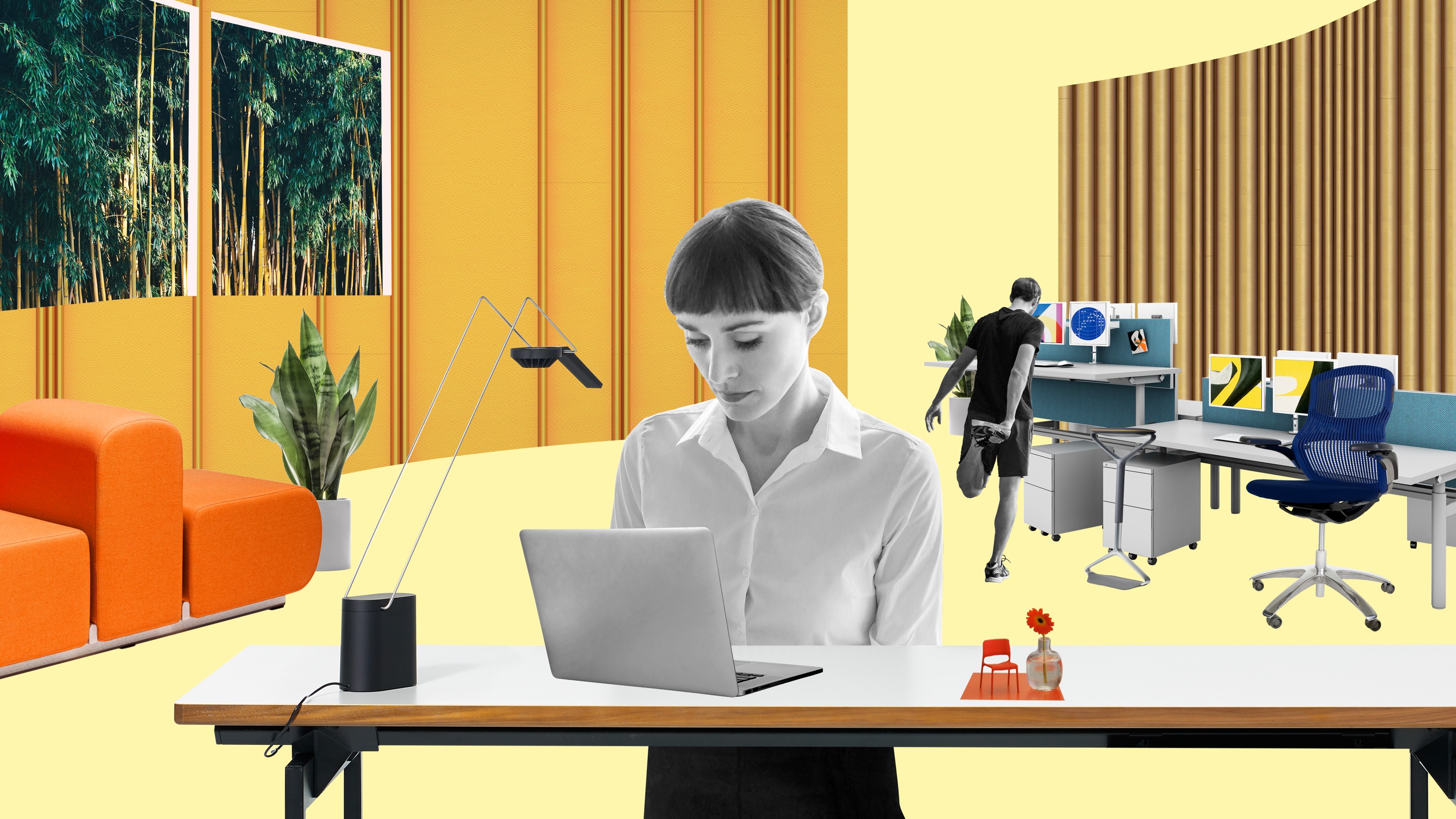
Ten years after the great recession, employees require more than a stable job to feel satisfied and happy with their work. Employers who fail to recognize that times have changed face losing top prospects to more agile employers who understand that without creating an environment that fosters happy, engaged employees, there is no business sustainability.
A lack of incoming talent is not a new problem for U.S. businesses. According to PwC’s 2014 Global Talent Survey, 63% of CEOs are concerned about the availability of key skills. So how can companies create a culture that attracts the best prospect then engages their employees? Easy, by reframing the concept of employee wellness to focus on employee well-being.
The Difference Between Wellness + Well-being
Simply, successful retention is about people. People cost far more than buildings or office solutions, and they’re far more valuable.
To define terms, wellness in the workplace is focused on physical health and includes ergonomic furniture, healthy eating and exercise programs or anti-smoking initiatives. To categorize an employee’s well-being, you’re considering not only their physical wellness but also their mental, emotional and social health. Well-being cannot exist without wellness, in fact, it exists within wellness.
This Knoll graphic, based on Maslow’s hierarchy of needs, shows us that well-being and a greater sense of satisfaction and achievement can only be achieved after fundamental wellness needs are met.
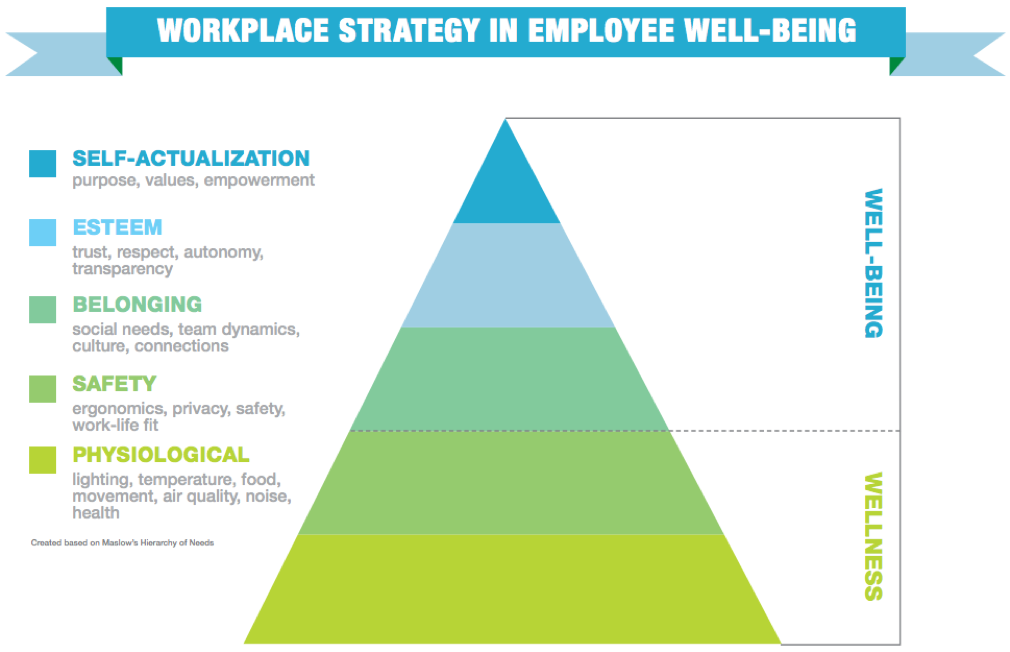
How can you Implement Well-Being in Your Workplace?
Once you’ve accomplished a stable sense of physiological and safety needs of your employees, you can begin to foster a culture of well-being.
While it’s easy to instill cultural perks like “Taco Tuesday” at your company, today’s choosy employees are less likely to be enticed by shallow offerings. However, a well-balanced work-life dynamic and a healthy office environment appeals to Americans who are spending more money on experiences than goods and services.
So how do you create a culture that fosters experience? Appeal to your employee’s higher needs by appealing to the following needs:
Belonging:
- Offer a sense of community for employees by providing communication tools onsite and remote employees can interact through
- Common social areas of the office such as the kitchen, dining areas or relaxation sections make great environments for employees to socialize and feel valuable as a member of the team or community
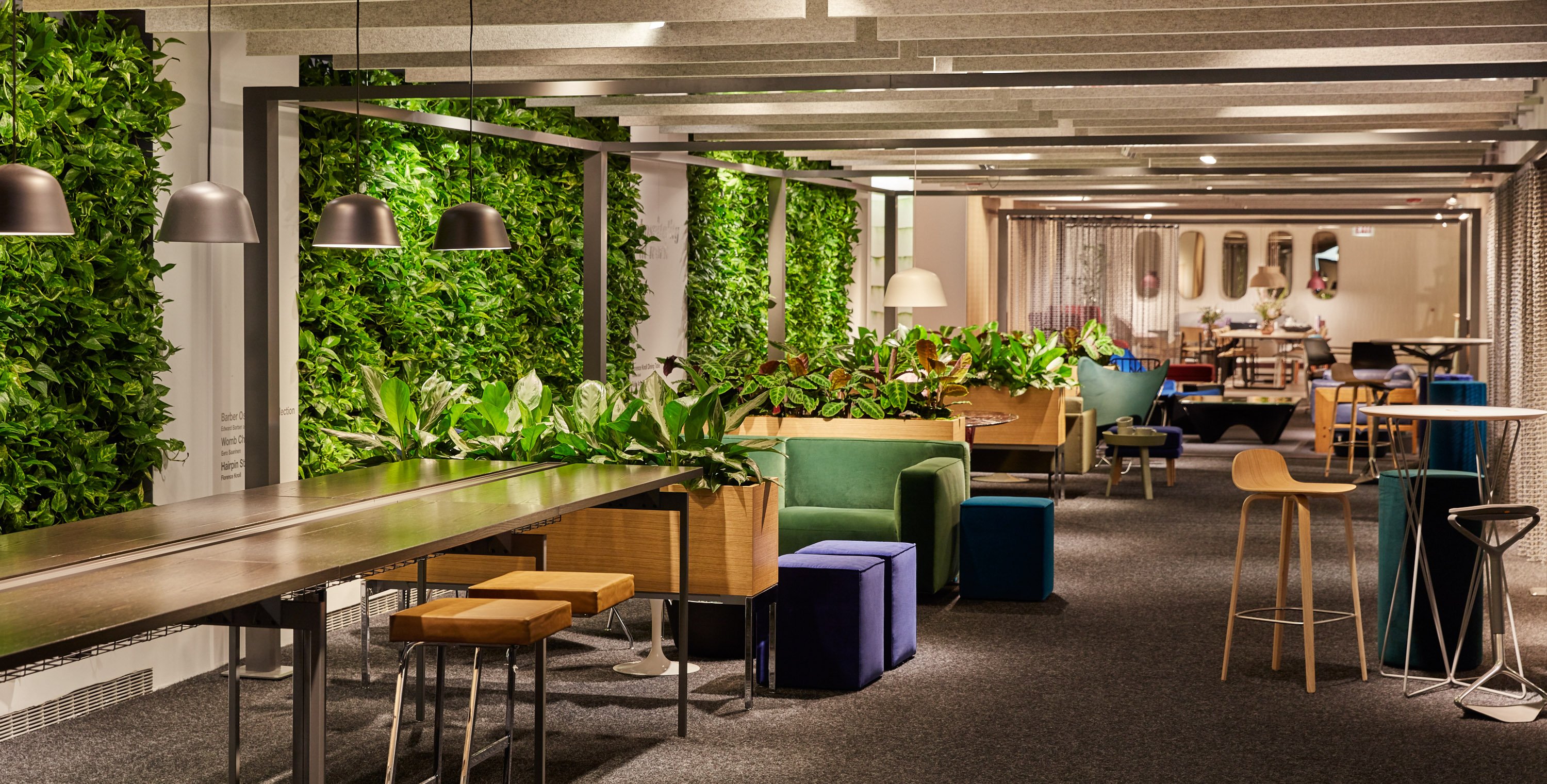
Welcoming Environments Muuto ambit lamp Antenna Table Four Seasons Barstool
Esteem:
- Include employees in the workplace design process
- Create private spaces for one-on-one discussions and collaboration spaces
- Reinforce transparency with glass walls or an open-floor plan
- Use color, texture and materials to engage the senses
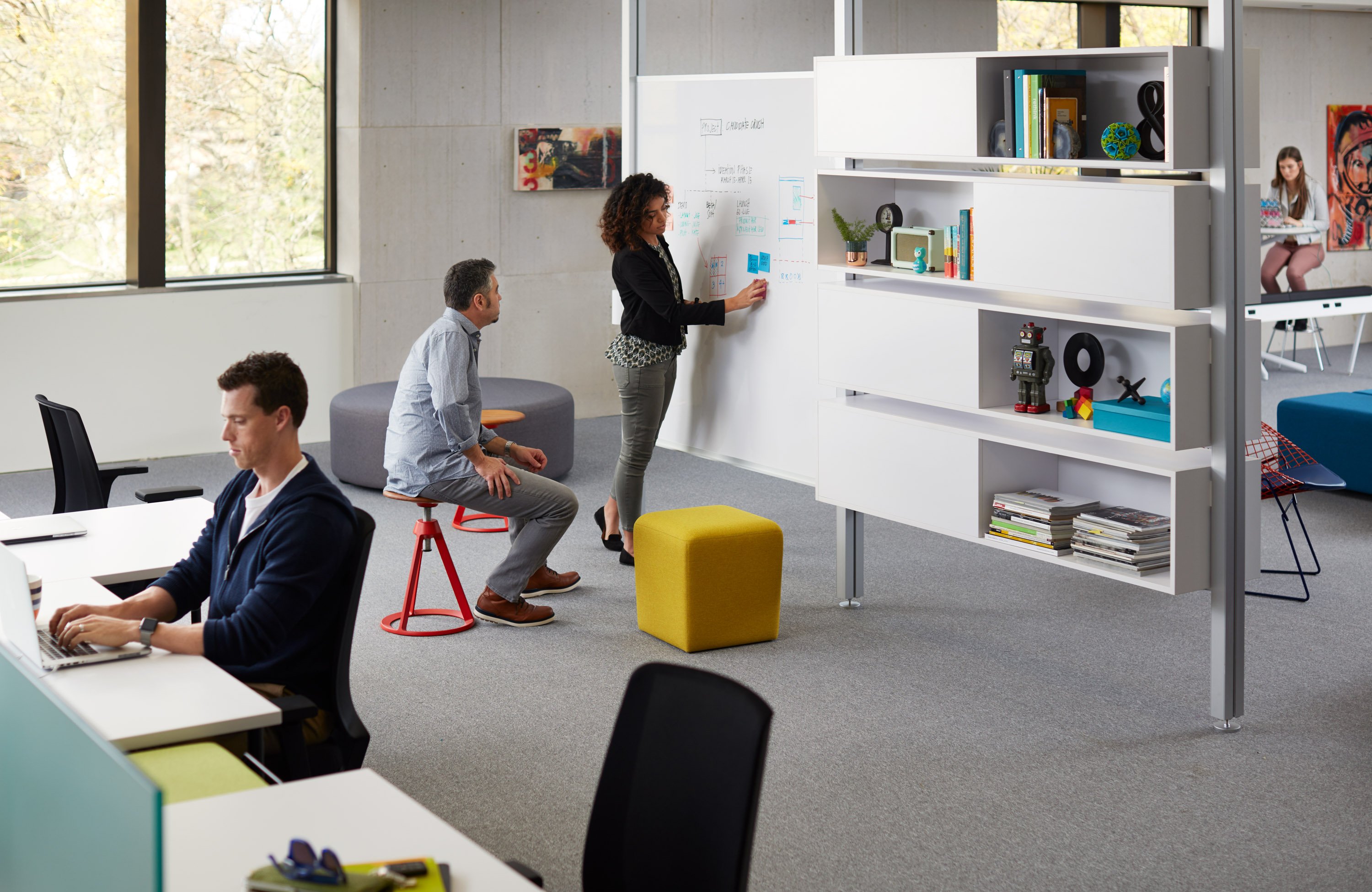
Interpole storage whiteboard screen activity spaces piton stool
Self-Actualization:
- Offer employees the choice of workspace they’d prefer
- Provide furnishings and accessories that allow for personalization
- Provide intuitive, modern technology
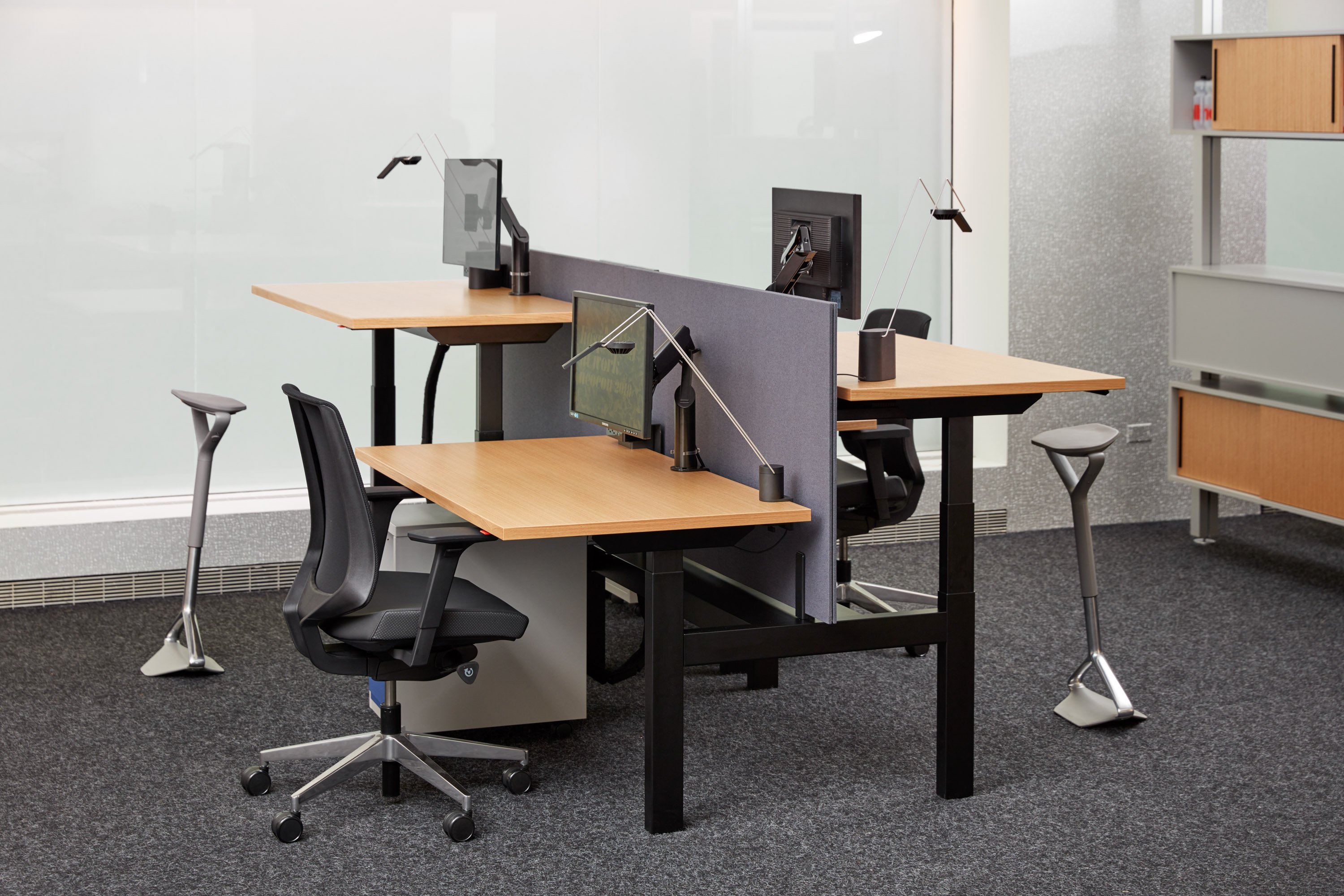 bench k. task HiLo Height adjustable benching benching Sapper XYZ monitor user-direct experience
bench k. task HiLo Height adjustable benching benching Sapper XYZ monitor user-direct experience
To create a culture of well-being, begin by defining your goals and objectives for a well-being initiative. Next, interview your employees to determine your workplace needs and opportunities for improvement. Once you know what you need and what your employees are interested in, test your well-being initiative alongside your organizational practices and implement the plan with your education coordinator, communications director or HR manager.
Knoll’s research found that as little as 10% increased investment into employee well-being raised employee productivity 5% company-wide.
To learn more, read Knoll’s whitepaper Moving From Wellness to Well-Being. To get in touch with our team, who can provide fulfilling furniture and design solutions for a culture of well-being contact us at hello@corpconc.com.

